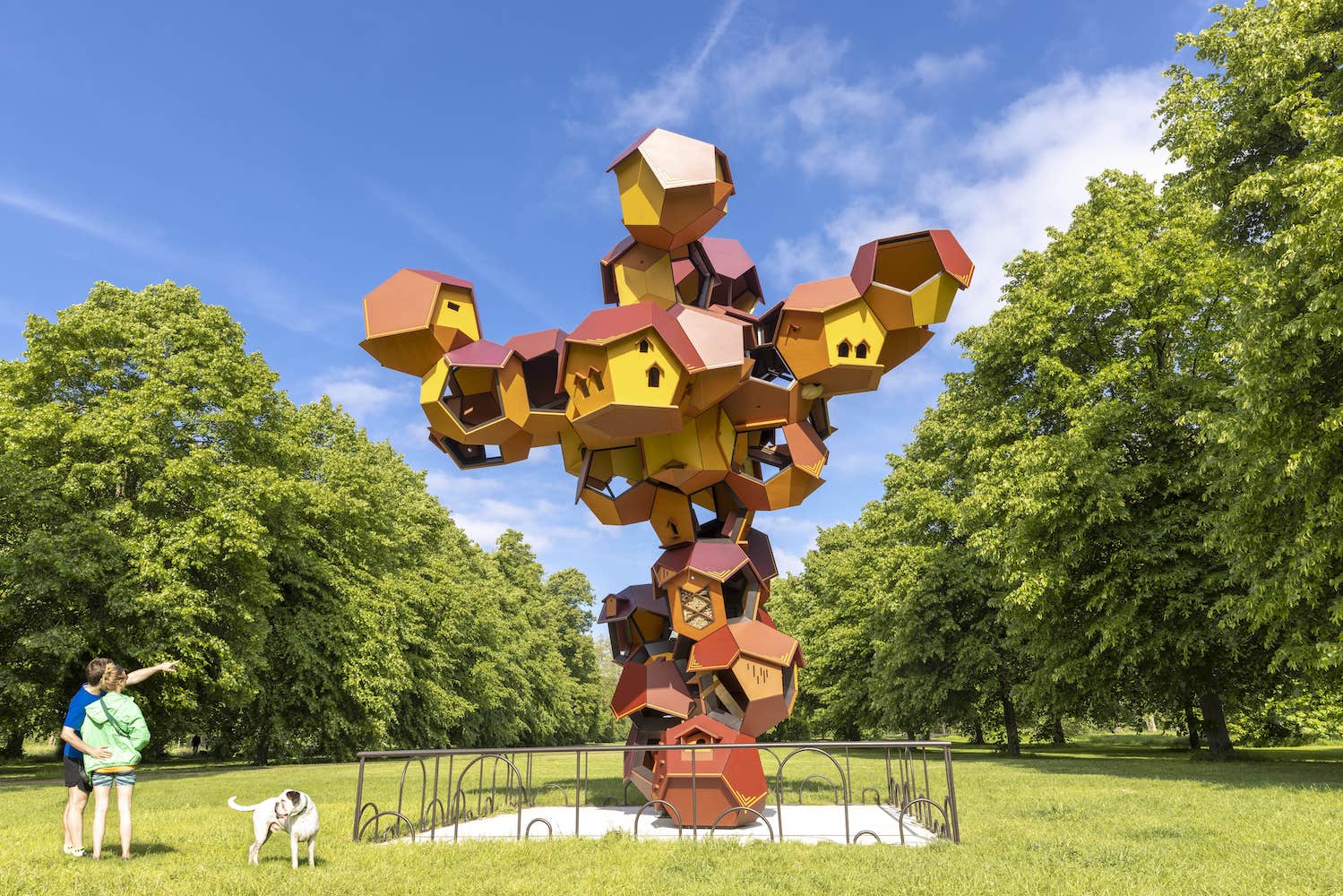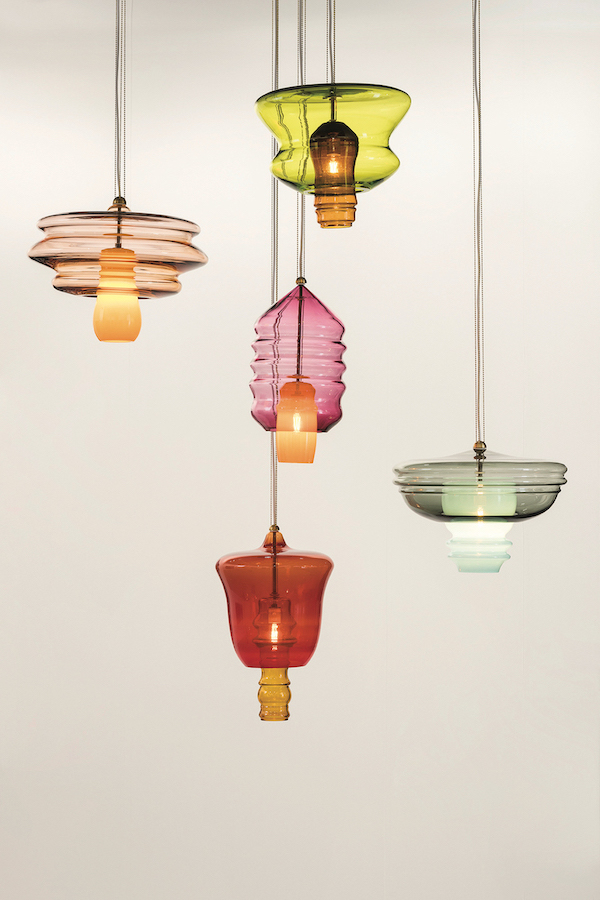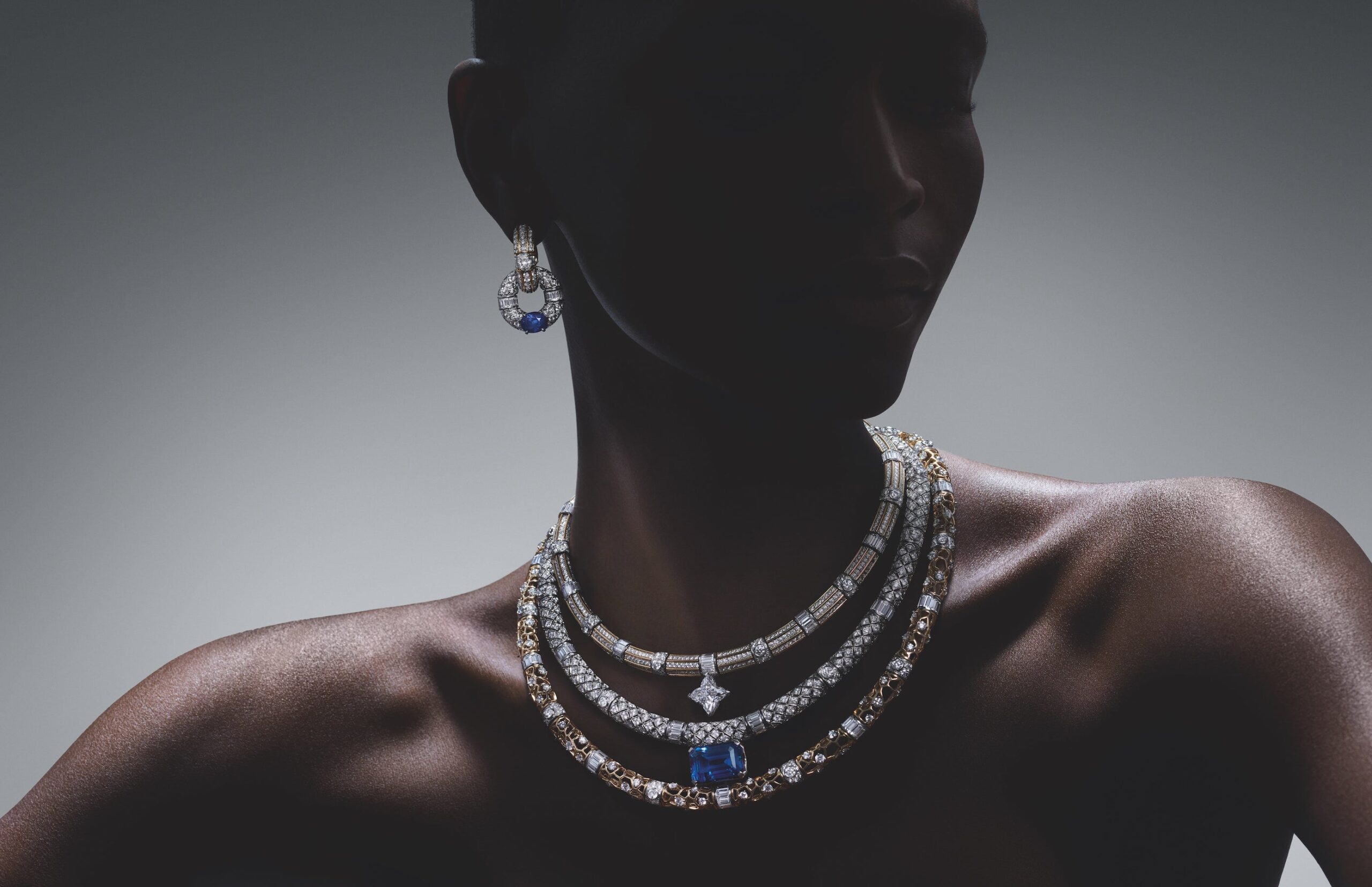Tomás Saraceno Recognizes the Need for Connected Change, as a Community
Tomás Saraceno described his recent “Web(s) of Life” at The Royal Parks and Serpentine South Gallery in London, on view June 1–September 10, 2023, as a three-month performance, rather than an exhibition. He also meant for the public to see themselves as engaged participants, rather than visitors.
Bringing together a range of projects, from his longterm research of spiders to his environmental activism community Aerocene, the artist asked participants to become present and sensitive to our place in the world, our role in an interconnected ecosystem, and our responsibility in the current climate emergency. Calling attention to the nonhuman life that always surrounds us, even in a big metropolitan city like London, Saraceno attuned “Web(s) of Life” to the season, opening the exhibition to multiple species (not just spiders!), and extending its borders beyond Serpentine South into the Royal Gardens. On the roof of the Serpentine, he created sculptures that invite wildlife such as birds and squirrels to live like animal artists in residence.
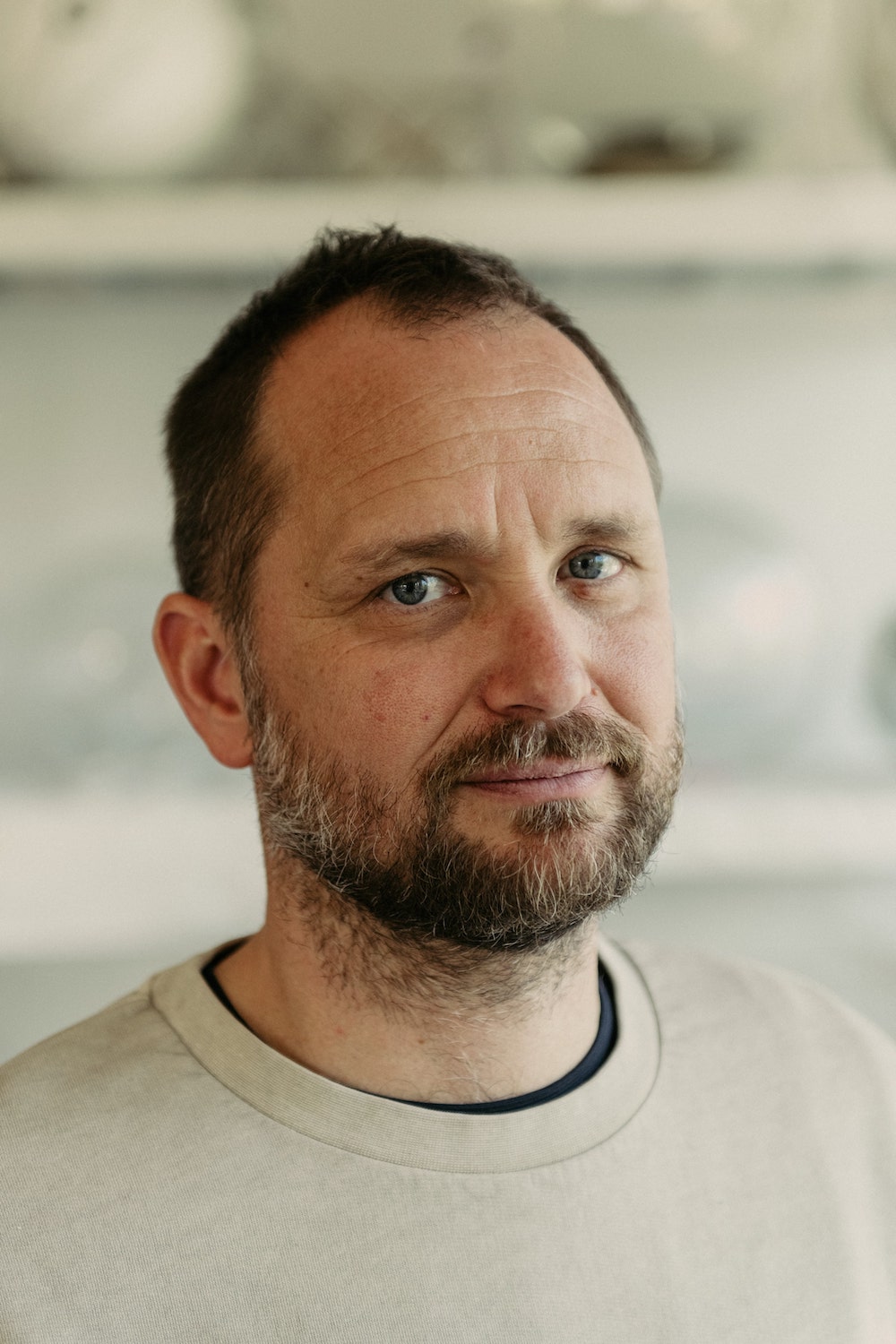
Tomás Saraceno, portrait by Robert Rieger.
Saraceno calls attention to energy systems in a myriad of ways as well. Requesting participants to relinquish their phones results not only in a presence of mind, but a greater awareness of how materials that make up our devices found their way into our pockets. His film featuring the communities of Salinas Grandes, Jujuy, Argentina, shows how lithium extraction in the region has devastated the local population. Saraceno’s time in Salinas Grandes involved another project, Aerocene, an open-source community of activists that imagines a future of flying without fossil fuels and borders.
From his studio in Berlin, Saraceno spoke with Whitewall about why we can no longer live as if we are isolated from each other, other species, and other parts of the world. With his art, he wants to build bridges of solidarity, attention, and sensitivity.
Tomás Saraceno’s Exhibition at Serpentine Invited Participants, Rather than Visitors
WHITEWALL: What were the beginnings of this exhibition at the Serpentine?
TOMÁS SARACENO: I think some 20 years ago, back in 2001 when I met Hans Ulrich Obrist in Venice. I was a student, and he was doing a seminar on topics of utopia. I was just coming from Argentina at that time to study more in Europe. Then for years and years we continued long conversations, and here we are now doing this exhibition.
WW: That is a long conversation! When you found yourselves finally putting together a show for the Serpentine, what kind of work did you want to present?
TS: We agreed on different roadmaps of how these long-term dialogues might overlap with the time of exhibiting something in London, and might unfold after. I try to do shows which are more weather-based, climate-sensitive, season-based.
What was the most interesting for me was to weave different places, situations, moments, and people with spaces. I was working for quite a bit in Argentina in the north, and I wanted to show a movie of some of the actions we were doing right there right before the pandemic.
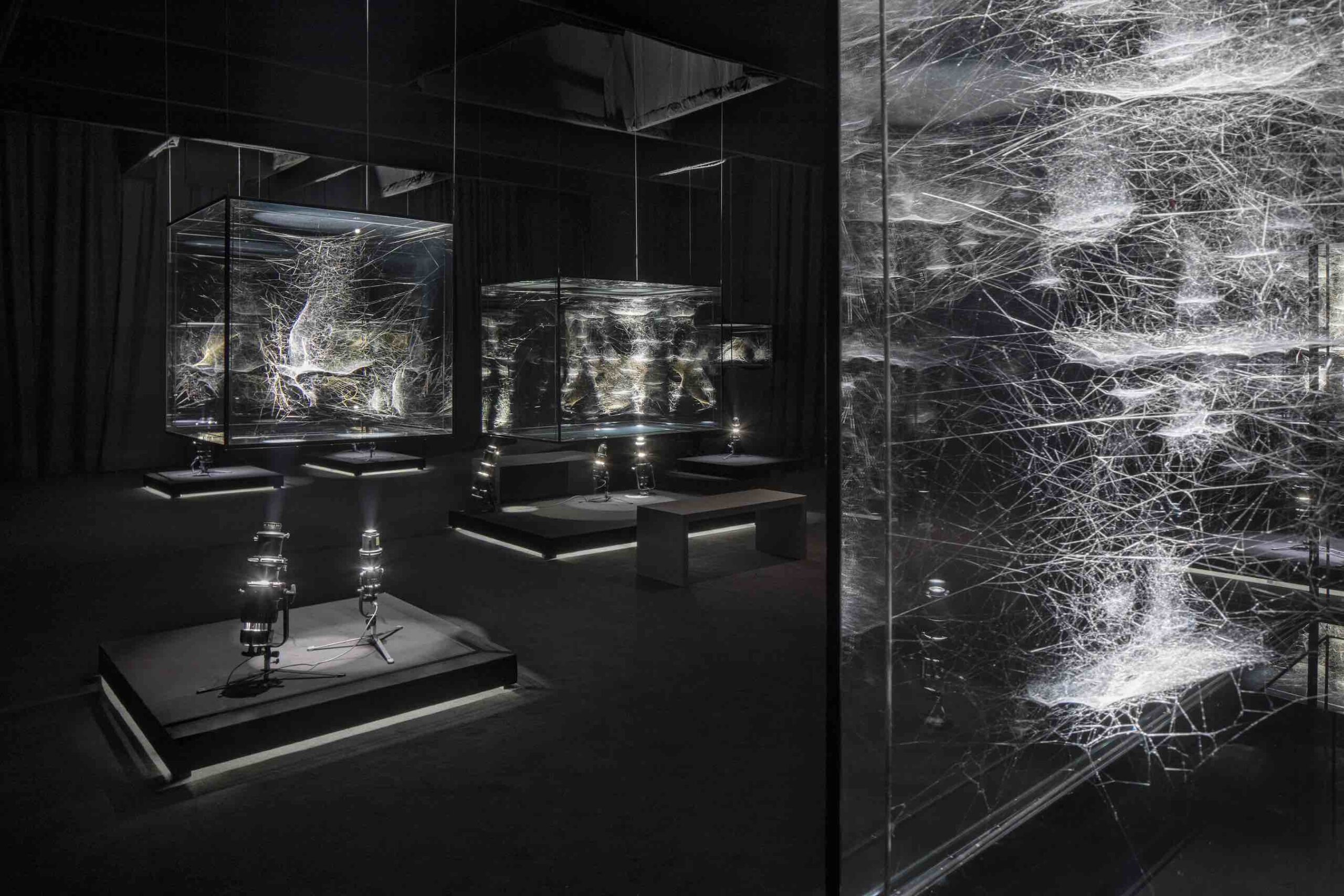
Tomás Saraceno, “Webs of At-tent(s)ion (detail),” 2020, seven spider frames, spider silk, carbon fibers, lights, dimensions variable; © Studio Tomás Saraceno, photo by Nicholas Knight, courtesy of the artist; spider/webs; Tanya Bonakdar Gallery, New York/Los Angeles; and Neugerriemschneider, Berlin, photo courtesy of The Shed.
WW: What was the work you were doing in Salinas Grandes, Jujuy, Argentina, before the pandemic?
TS: I was born in that region. We started to go there in 2017 because they have these amazing salt flats which are very beautiful and good for performing the flights of exploration we do with this community under the name of Aerocene. There we discovered this community that suffers from lithium extraction.
WW: So you were there first for Aerocene, a community of activists you founded of open-search research that imagines a future without fossil fuels and borders. And then you discovered this community impacted by the mining of lithium?
TS: Exactly. And then we started to think about what we could do together. We could help each other with our message to create a better world. That was the way that we started this conversation.
The video [in the exhibition] is a commentary and an open letter to the visitor to sign the petition to stop the extraction and the violence applied to these people, this territory. We hope to politically engage the participants of this exhibition. We don’t call them “visitors.” We see them as real actors who can really engage with this movement.
WW: Part of that participation is that when they enter the exhibition, they surrender their phones.
TS: The ones who can. I’m the first one! I hope this exhibition will allow me to lower my screen time and reconnect with other forms of knowing. It’s a very personal journey of many worlds, and somehow we have to find more equilibrium.
WW: And especially our go-to mode is to experience art exhibitions by taking photos or videos on our phone.
TS: We take a picture before we even see it. And the show plays with that, also about the governments who have applied certain policies to what is inside the phone, the material it’s made from, the disruption of how the majority of people live on planet earth to the huge profits of the few. There’s a huge business and economy to maintain this attention.
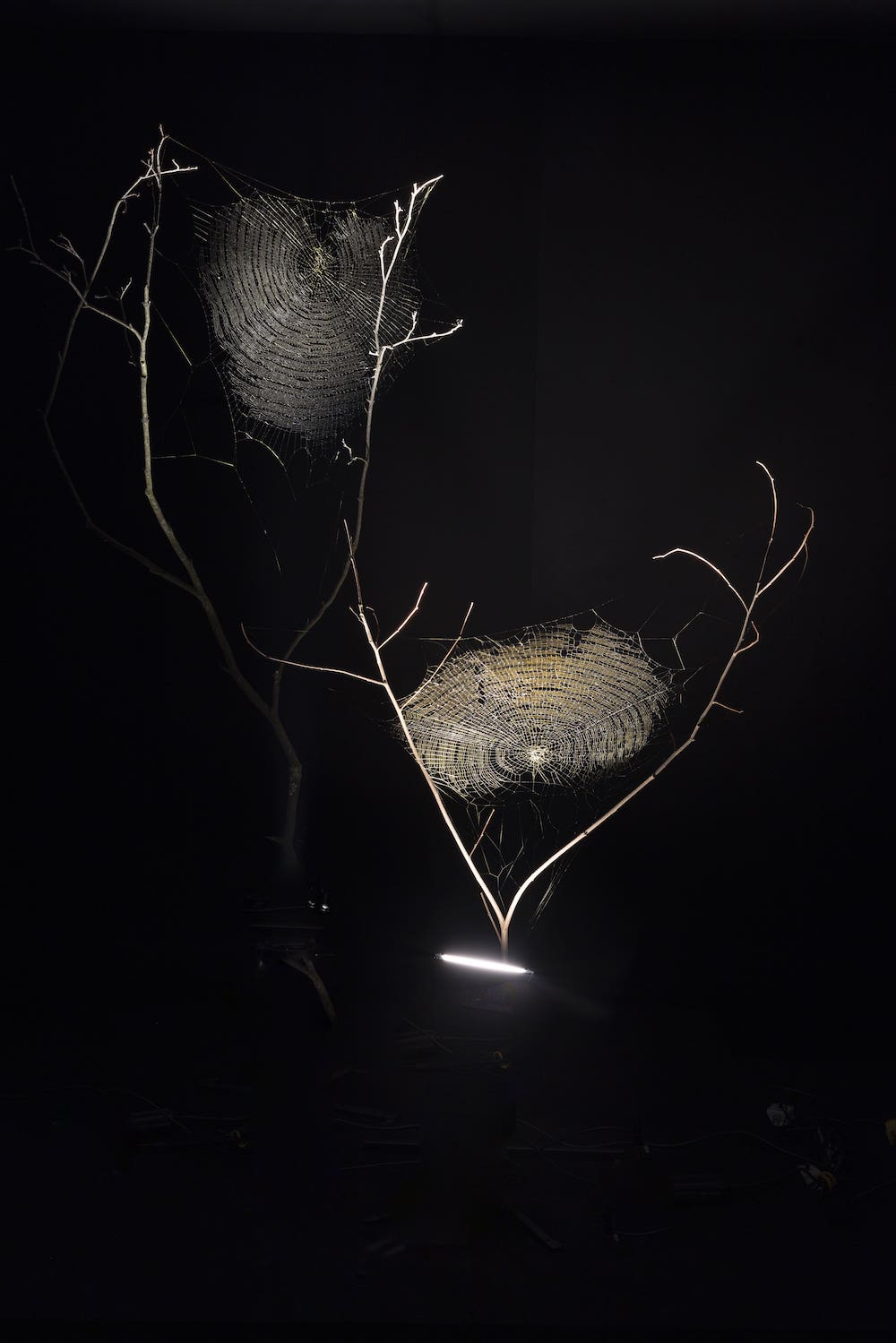
Tomás Saraceno, “World(ing)WideWeb(s).Life,” 2023, installation view at “In Collaboration: Web(s) of Life,” Serpentine, London, 2023, photography by Studio Tomás Saraceno.
Saraceno Works in Touch with the Seasons
WW: You’ve also chosen to show work based on the seasons. With its summer opening, certain parts of Serpentine South accommodated all forms of life.
TS: The majority of people on Earth are moving to these highly dense cities which exclude nonhuman forms. So can we propose that the roof could also become a host of other forms of visitors? There are a lot of birds coming all the way from Africa in May, which means we will be right on time for them to occupy some sculptures I’ll leave on the roof of the Serpentine. The birds can enjoy the show; they can enjoy the sculpture.
We have agreed with the park that some might stay a bit longer to match their tempo for when they might migrate again. This is a tiny commentary on how humans divide territories, yet other forms of life move according to the seasons. We need to rethink the sustainability of certain ecologies at large.
WW: Speaking of how we move around, that’s part of the message of Aerocene, which aims to restore the thermodynamic balance of the earth.
TS: I truly believe if we’re going to change, we need to change as a community. We try to work together across different disciplines and fields and aspects. Aerocene is really about the capacity of working together—with spiders, with other humans, with wind, the currents, and so forth, to try to make these changes that are so much required from certain parts of the populations.
There is an author, Jason Hickel, who wrote a book, Less Is More: How Degrowth Will Save the World [2020], where he very clearly says there is a huge investment from the Global North to the Global South in aid and philanthropy supporting development. What seems as bringing technology, bringing help, when you really look at the numbers, it’s a huge business. More or less it is not truly “aid.” They invest around two trillion, and what they get out of the country is five trillion. You call it aid, but it’s a huge profit.
We see exactly that with lithium extraction in Argentina. We think about this energy transition, but who really gets profit is people who have three cars and get another car more. There is a huge disparity in equality in who has access to these minerals. These corporations don’t leave anything in Argentina. There is this myth that they will bring modernization to the land, but they suck up all the water. For every ton of lithium, you need two million meters of water. Water is scarce in the land, and the people who live there don’t profit from anything. At the end, this is a neocolonial, extractive energy transition for the rich who already have all the privilege.
WW: Essentially corporate colonialism.
TS: We are trying the best we can to become more sensitive to this. Within the Serpentine, we decided to switch off the AC in all the galleries. When there will be heat waves, we will enjoy the wildlife in the park; we will watch the birds coming and seeing the sculptures on the roof and enjoy them. We will see these amazing architectural pavilions made by my spiders and named “spider webs,” which I’ve enjoyed for so many years. And we can read and do a lot of other things while being sensitive to energy consumption.
Still, I’m shipping some works. But some of the crates that we ship will be exhibited, part of the exhibition. We’re trying to, as much as we can, respond to a world that urgently needs us to work all together and to build these bridges and this solidarity.
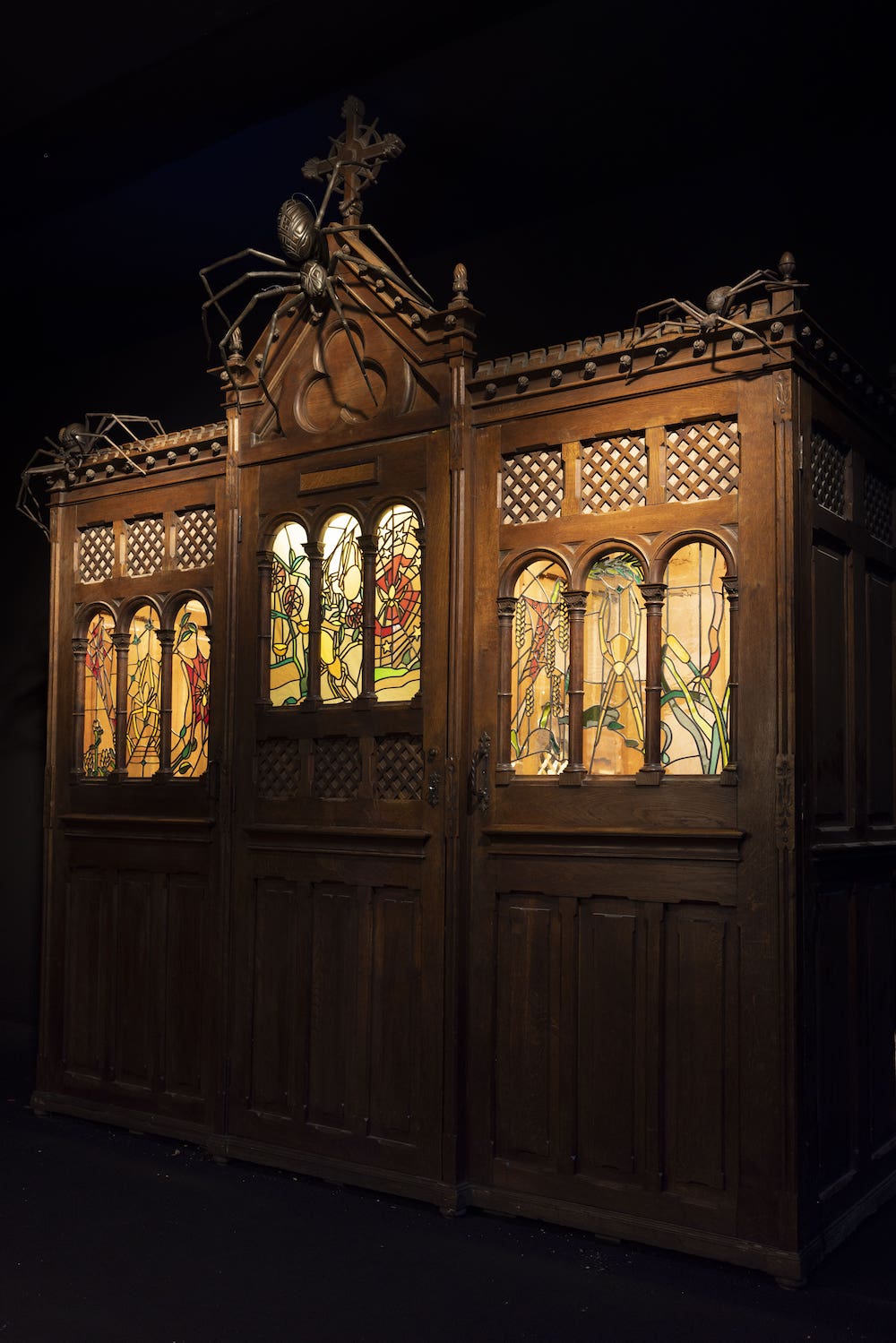
Tomás Saraceno, “ArachnoAnacroArcano,” 2023, installation view at “In Collaboration: Web(s) of Life,” Serpentine, London, 2023, photography by Studio Tomás Saraceno.
“We’re trying to, as much as we can, respond to a world that urgently needs us to work all together.” — Tomás Saraceno
WW: Encouraging to put away your phone, letting it be hot, allowing for the wildlife to engage with the exhibition, and exhibiting spiders and their webs—tapping into a common phobia—really wakes up the audience, makes them pay attention.
TS: We hope so! And in a positive way, too. It’s hopefully not black and white, it’s not in favor of dualism. It’s to be more responsible and aware of how society really needs to go out and vote. It’s up to us. Phones are single-use, the same as plastic bags. Phones are very hard to disassemble. And governments are not doing much in restricting how mobile phones need to be used, disassembled, taken apart, and reused or repurposed.
Giving a huge appreciation to the spiders being present at the Serpentine, by appreciating these beautiful artworks that they weave, and we weave in collaboration, we might change our attitude. After so many years, I’ve converted many arachnophobes to arachnophiles! People tend to send me messages after and say, “I found a spiderweb in my home. Is it an artwork?” I say, “Well, ask the spider!” I’m happy it’s happened. It’s the best we could expect to change our relationship and our care, our empathy, our dialogue.
WW: How does it work when exhibiting these spiderwebs?
TS: I believe that by working with the spiders, the relationship is not so much as a parasitic extractive relationship but more as an equal respect for dialogue that we treat with care and attention. Many of the webs which are present—which, yes, I bring them all the way from Berlin, unfortunately—will be open and welcome to spiders from the Serpentine to keep weaving their web on top of other webs.
From visual culture, we have moved to a more sonic culture. Listening. The spider has its own intelligence, its own sensitivity, its own language. When we play music, we don’t imitate; we play with the spiders. When we weave a sculpture together, we hope to enter into a relationship of respect that is open to shift and to change and to observe and be sensitive. Sometimes during these jam sessions and concerts, the spider has been quiet and has decided not to play for over an hour. We should accept the silence that sometimes spiders place on us. Hopefully, the exhibition will be respectful of all these spiders living in their webs.
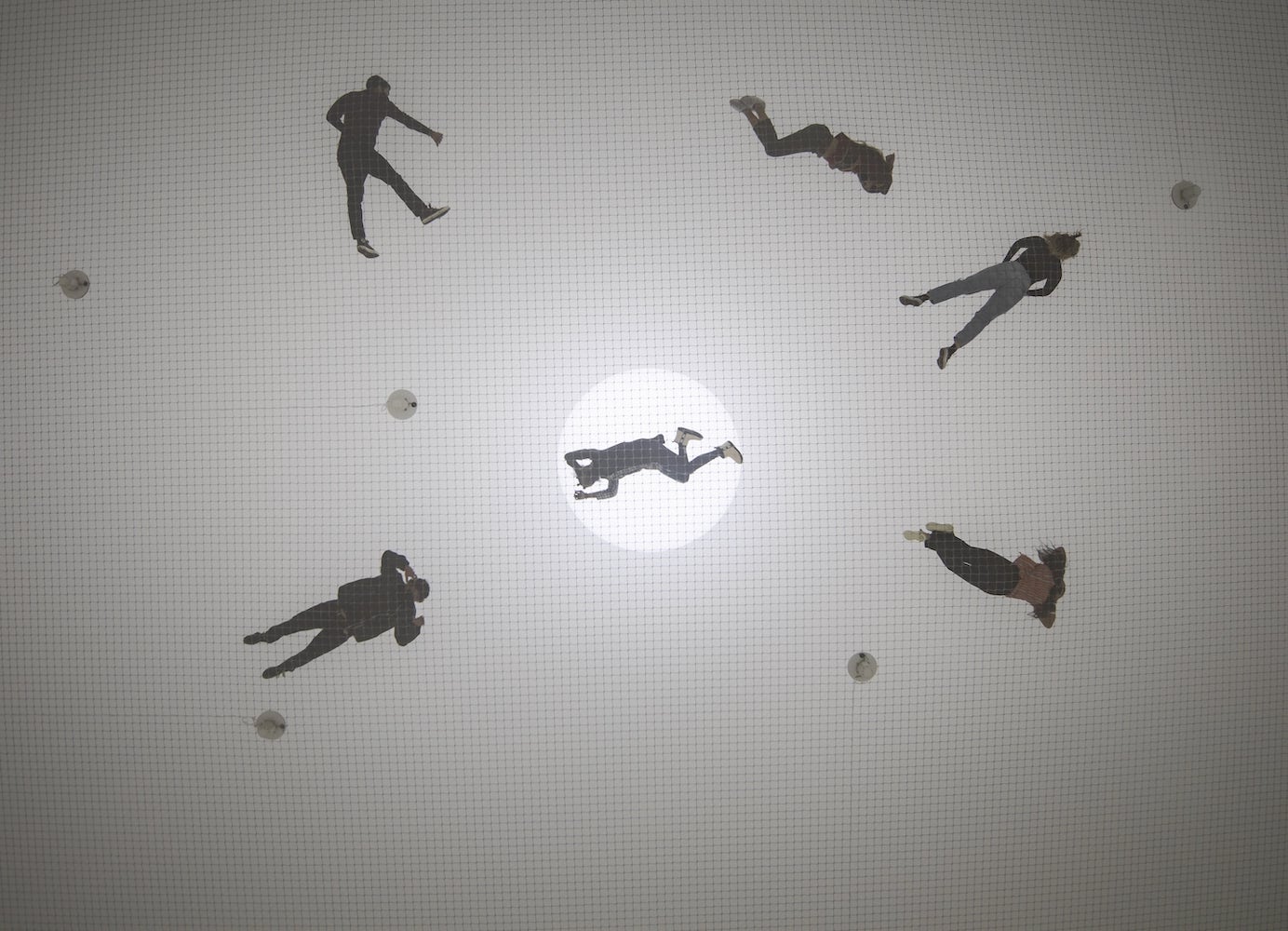
Tomás Saraceno, “Free the Air: How to hear the universe in a spider/web,” 2022, custom steel, wire net, wood, light, LFE, shakers, fog, diameter: 95 feet; © Studio Tomás Saraceno, commissioned by The Shed, photo by Nicholas Knight, courtesy of the artist and Tanya Bonakdar Gallery, New York/Los Angeles; Neugerriemschneider, Berlin; Andersen’s, Copenhagen; Ruth Benzacar, Buenos Aires; and Pinksummer Contemporary Art, Genoa, photo courtesy of The Shed.
WW: The silence is something worth listening to.
TS: Absolutely. There is this tendency to behave differently when you enter, because the room is black. There is this moment of wonder it brings that can sometimes be spiritual.
Another part is that the spider diviner Bollo Pierre “Tadios” from Somié, Cameroon, offers his divination practice for anyone who would like to consult him for his fee. In the exhibition, he’s offering to consult the wisdom of the spiders through his divination practice.
WW: Have you ever consulted the wisdom of the spiders?
TS: Yes! Amazing!
WW: What were you told?
TS: So far, it’s been quite good.
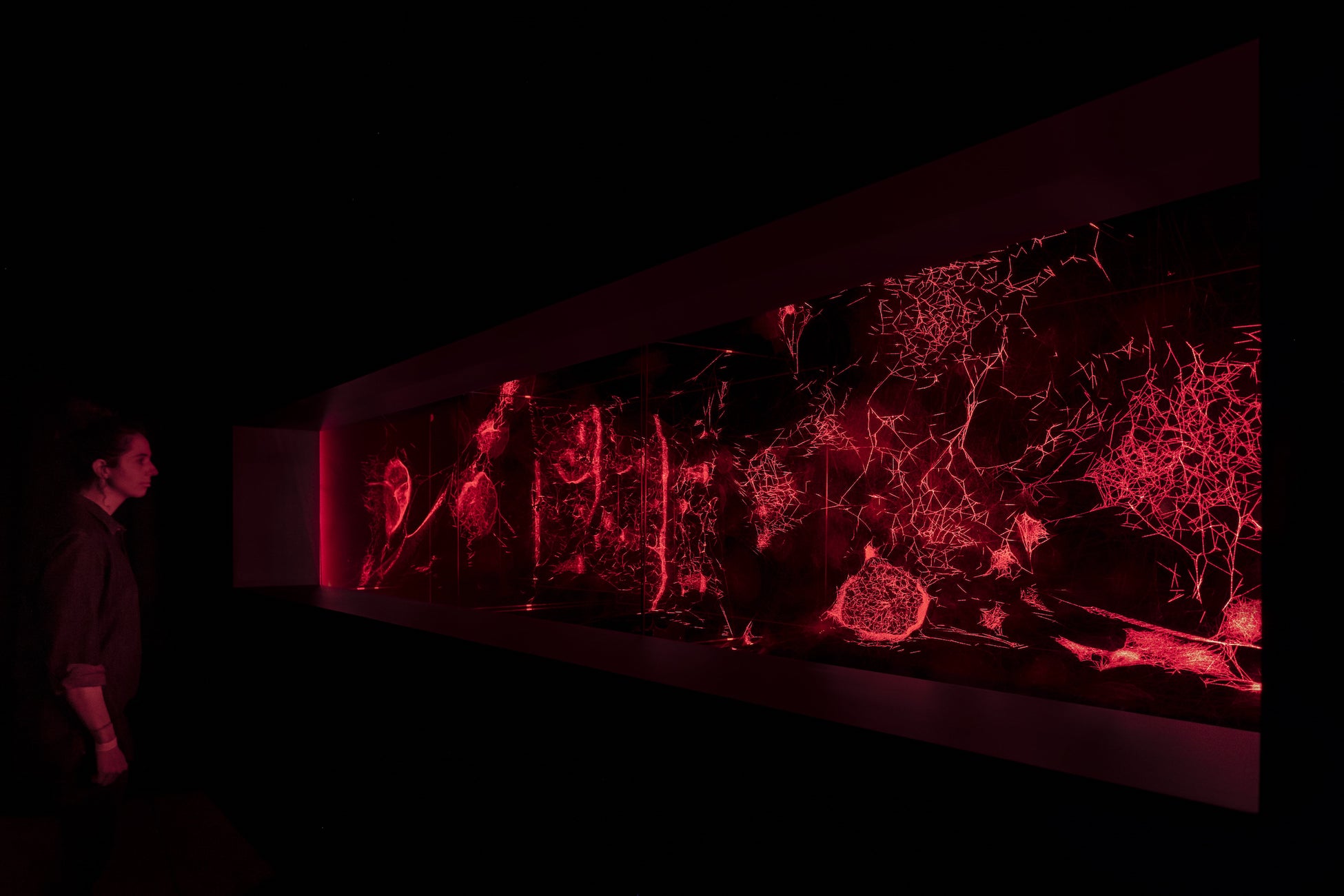
Tomás Saraceno, “How to entangle the universe in a spider/web?,” 2020. Laser, spider silk, carbon fiber. Window: approx. 14 x 2.5 feet; three webs: approx. 167.5 cm 47.8 x 41.3 x 70 inches, 31.9 x 27.5 x 45.3 inches; © Studio Tomás Saraceno, photo by Nicholas Knight, courtesy of the artist and Aerocene Foundation; Andersen’s, Copenhagen; Ruth Benzacar, Buenos Aires; Tanya Bonakdar Gallery, New York/Los Angeles; Pinksummer Contemporary Art, Genoa; and Neugerriemschneider, Berlin, photo courtesy of The Shed.



